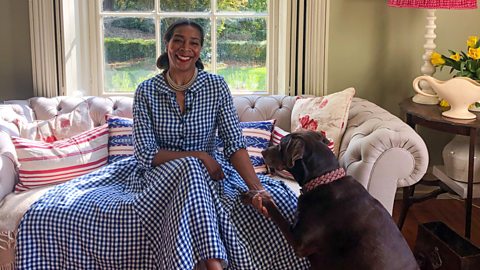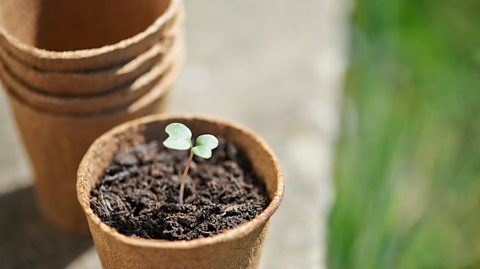The rural trend has taken social media platforms by storm.
Images of walking barefoot across fields, wearing floaty dresses and baking hand-picked berries into pies are all over the internet. Even celebs like David Beckham, Harry Styles and Taylor Swift have been seen celebrating the idyllic outdoor lifestyle in cardigans and wellies. From picnics in the park to watering plants on the porch, all things country and cosy have come to be known as ‘cottagecore’.
But what exactly is cottagecore, where did it come from and what does it take to live it? We spoke to cottagecore influencer, writer and stylist Paula Sutton (better known online as Hillhousevintage) about the reality v the aesthetic.

The core of the trend
Cottagecore is an online aesthetic - and now a community - which has pinged around social media in recent years but has been repopularised by influencers in lockdown. It romanticises the idea of cottage life in the countryside or the woods. ‘Core’ just means an intense interest in something, and cottagecore generally includes things like flowers, books, animals and vintage furniture and clothing. It also extends beyond an aesthetic to the activities you might do.
“For me, it’s about enjoying the simpler things in life and finding enjoyment in going back to basics,” says Paula. “Everything from upcycling, reusing, gardening and baking to mending clothes so that you can wear them for years.”
She has a theory on why it’s suddenly become so popular in 2020:
“I think with everything that’s been going on this year, ‘cottagecore’ has suddenly been catapulted into the forefront because people crave a way of escaping the current realities of life,” she says. “It has been my way of living for the past decade, and it’s only this year that I was labelled as a follower of cottagecore. Before that I was just Paula doing Paula.”


Snuggle up under a throw with these cosy cottagecore reads:
The Secret Garden by Frances Hodgson Burnett
The Wind in the Willows by Kenneth Grahame
Little Women by Louisa May Alcott
Anne of Green Gables by L.M. Montgomery
A Sky Painted Gold by Laura Wood
Jane Eyre by Charlotte Brontë


You can be cottagecore without a cottage
You don't have to live in the country or the woods to be cottagecore — you can live the fantasy in your garden, on your apartment balcony or even in your bedroom. Many influencers and TikTokers show off their cottagecore living from their box rooms or their basements.
“Seeking out the simple pleasure in everyday things doesn’t have to depend on where one lives,” says Paula. “That’s why it's accessible and achievable for everyone, because it's all about back-to-basics and things that are well-made and not disposable.”
Second-hand books, clothes and furniture generally last long and fit in nicely with the aesthetic and you can easily learn to bake or grow vegetables from your own home.
Paula, who packed up her life in the city and moved to the countryside with no income at the time, has a few tips for if you’re considering turning the fantasy into reality:
“Make sure that it’s what you really want,” she says. “Don’t over romanticise the idea of living rurally or in isolation. If you need easy access to restaurants, high street shops and cafes etc, then certain parts of the countryside will not be for you.”
And while a big part of cottagecore may be all about enjoying the cosiness of your own home, Paula recommends keeping transport in mind:
“It’s good to either know how to drive, or to at least be extremely close to a bus or train service. It sounds obvious, but many people have been caught out by moving before realising that they have to depend on help to get anywhere.”

For anyone and everyone
Some people have criticised the trend for glamourising what might be conceived as a colonial fantasy (think dreamy middle-class backdrops of Pride and Prejudice and Wuthering Heights). The reality of this country living was usually based on a cultural divide, and cottagecore has often been associated primarily with white women. Paula says that doesn’t have to be the case, as the hear of cottagecore is to live a simple and beautiful life.
“That certainly doesn’t sound like something that excludes people of colour to me.
“My parents arrived in England from Grenada (in the Caribbean) without a penny to their names but were able to eventually build a lovely life for themselves. Along the way they had to bake their own bread, grow vegetables in the garden, cook from scratch and be economical and inventive with their home décor.”
There is more and more representation on social media from all communities - disabled, indigenous, LGBTQ+, etc. - embracing cottagecore. It’s a trend which seems to suit anyone and everyone, even if your version of the fantasy could take some time to achieve.
Paula wraps up with a reality check: “Making it sound easy would be unfair. I know life isn’t as simple as wishing. But I also believe that people should attempt to live their dreams and be unafraid of stereotypes and what other people think.”
Five amazing biodegradable inventions which could potentially replace plastic
What is 'biodegradable' and what do these amazing inventions mean for the future of plastic?

Quiz: Do you have houseplant power?
From spider to Swiss cheese, we test your knowledge on your plant babies.

Urban wildlife to spot during lockdown
Less traffic means blackbirds singing clearly and more foxes in the garden
